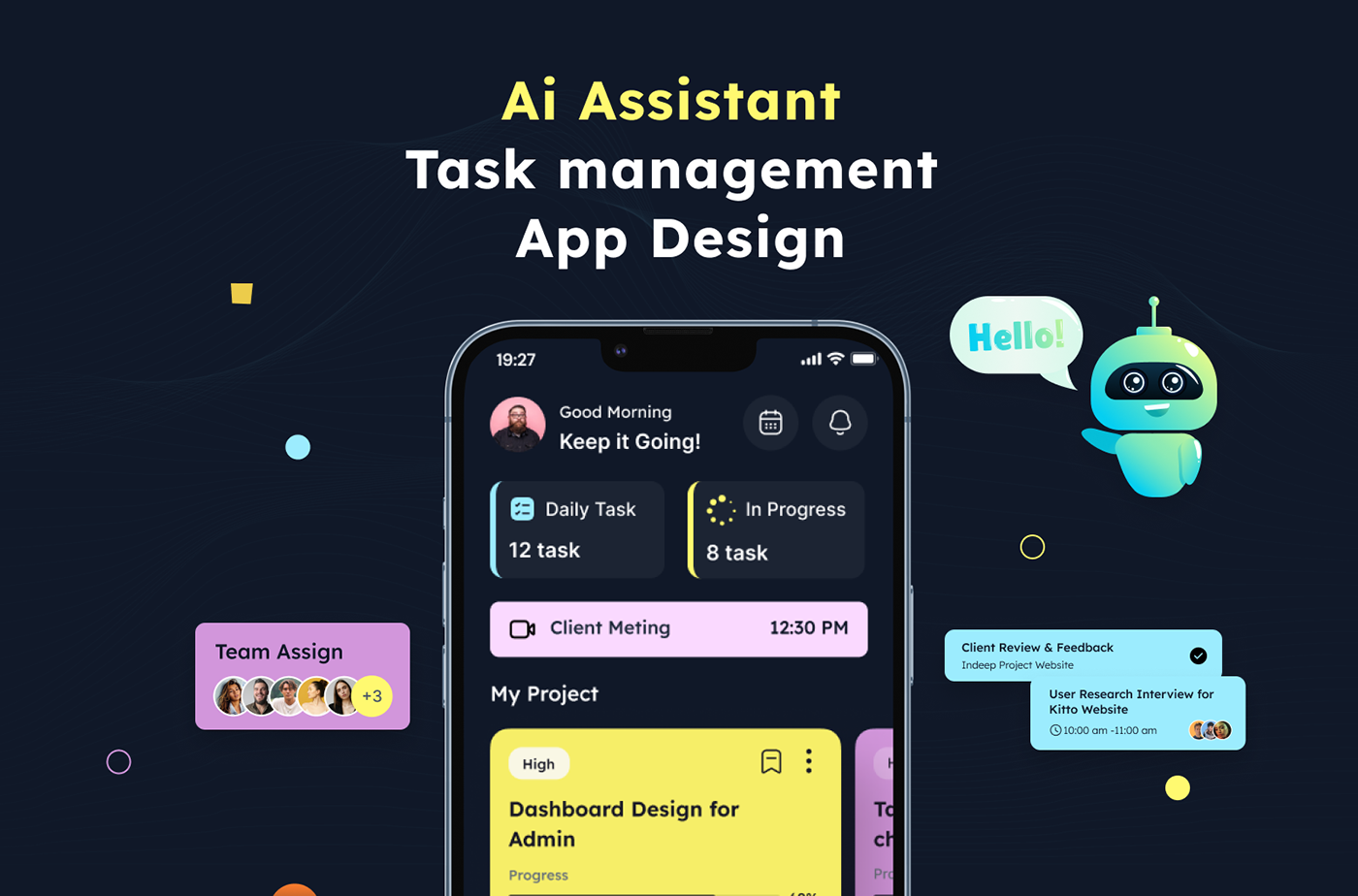AI Assistant Task Management App UI Design
In the digital era, task management apps have revolutionized how we organize, track, and complete our daily tasks. The incorporation of AI assistants into these apps has taken functionality to a new level, offering personalized, efficient, and intuitive user experiences. This article delves into the essential elements of an AI Assistant Task Management App UI Design, highlighting the features that make these apps not only functional but also a pleasure to use.
The Importance of Intuitive UI in Task Management Apps
An intuitive User Interface (UI) is crucial for task management apps. Users rely on these apps to streamline their workflow, so the design must be user-friendly and straightforward. AI integration enhances this by providing intelligent suggestions and automation, reducing the cognitive load on users.
Key Elements of AI Assistant Task Management App UI Design
1. Clean and Minimalistic Design
A clean, minimalistic design is essential for maintaining focus and reducing distractions. This includes:
- Simple Color Schemes: Utilizing a consistent and calming color palette helps in maintaining user focus.
- Whitespace Utilization: Effective use of whitespace prevents the UI from feeling cluttered.
- Clear Typography: Choosing legible fonts that are easy on the eyes ensures readability.
2. User-Centric Navigation
The navigation structure should be intuitive, allowing users to find what they need quickly. Key aspects include:
- Dashboard: A central hub that provides an overview of tasks, deadlines, and priorities.
- Menu Design: Easily accessible menus with clearly labeled categories.
- Search Functionality: Robust search capabilities that leverage AI to predict user queries and provide relevant results.
3. Personalized User Experience
Personalization is where AI shines. By learning from user behavior, the app can offer a tailored experience:
- Smart Notifications: AI-driven notifications that remind users of upcoming deadlines and suggest optimal times for task completion.
- Task Recommendations: Based on user habits, the AI can recommend tasks or reprioritize them.
- Customizable Layouts: Allowing users to customize their dashboards and task views to suit their preferences.
4. Voice Command Integration
Integrating voice commands enhances accessibility and hands-free interaction. Features include:
- Voice-Activated Task Management: Users can create, modify, and delete tasks using voice commands.
- Natural Language Processing (NLP): AI interprets and processes voice inputs accurately, providing appropriate responses and actions.
5. Seamless Integration with Other Tools
A task management app should integrate seamlessly with other tools and platforms:
- Calendar Integration: Syncing with calendars to automatically schedule tasks and set reminders.
- Email Integration: Allowing users to convert emails into tasks directly from their inbox.
- Third-Party App Support: Compatibility with popular productivity tools like Slack, Trello, and Google Workspace.
Enhancing Productivity with Advanced Features
1. AI-Powered Analytics
Advanced analytics provide insights into user productivity patterns:
- Performance Tracking: Monitoring task completion rates and time management.
- Predictive Analysis: Forecasting potential delays and bottlenecks in task completion.
- Progress Reports: Generating detailed reports to help users evaluate their productivity.
2. Collaborative Features
For team-based environments, collaborative features are essential:
- Shared Task Lists: Enabling teams to view and manage tasks collectively.
- Real-Time Updates: Providing instant updates on task status changes and team member contributions.
- Comments and Notes: Allowing team members to leave comments and notes on tasks for better communication.
3. Security and Privacy
Ensuring the security and privacy of user data is paramount:
- Data Encryption: Implementing robust encryption protocols to protect sensitive information.
- User Authentication: Utilizing multi-factor authentication to enhance security.
- Privacy Controls: Giving users control over their data and how it is used by the AI.
Designing for Scalability and Future-Proofing
1. Modular Design
A modular design approach allows for easy updates and the addition of new features:
- Scalable Architecture: Designing the app architecture to support growth and additional functionalities.
- Plugin Support: Enabling third-party developers to create plugins that enhance the app’s capabilities.
2. Continuous Improvement through User Feedback
Incorporating user feedback is crucial for ongoing improvement:
- Feedback Mechanisms: Integrating in-app feedback forms and surveys.
- User Testing: Conducting regular user testing sessions to identify pain points and areas for enhancement.
- Iterative Updates: Rolling out updates based on user feedback and emerging trends.







